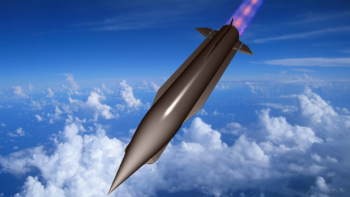
WASHINGTON: In a blow to US plans to build a regional missile defense network in the Pacific, Japan today put the brakes on the second of two Aegis Ashore systems, effectively halting all work on the program in Japan.
The surprise announcement was made Monday by Japanese Defense Minister Taro Kono, who said the US government and Lockheed Martin could not find ways to ensure rocket debris won’t fall on local communities.
The two Aegis Ashore systems were to be installed at Japan Ground Self-Defense Force bases at Akita Prefecture in the north of Japan’s main island of Honshu and at Yamaguchi Prefecture in the south.
“Due to considerations of cost and timing, we have stopped the process of introducing the Aegis Ashore system,” Kono said two years after his country committed to buying the systems. “For the time being, Japan will continue to counter (missile threats) with Aegis-equipped ships.”
The $2.1 billion program had been sputtering even before Kono’s announcement, after Tokyo said last month it would scrap the Akita system in the wake of sustained local protests against it. That placed plans to have both systems operational by 2025 in jeopardy; the halting of work on the second system will likely make that schedule — if the program is restarted — impossible to meet.
In an emailed statement, a Lockheed Martin spokesperson said “we are actively working with the U.S. Missile Defense Agency (MDA) and the Japanese Ministry of Defense to provide an Aegis Ashore system on schedule and budget. We are standing by to support the MDA and address any concerns of the Japanese government.”
The Japanese government will continue to conduct land surveys to try and find more suitable locations for missile defense systems, away from populated areas, but it’s unclear when those assessments will be completed.
“This is a good reminder that threat perceptions in Japan have not shifted as much as Washington assumes,” said Eric Sayers, an analyst with the Center for New American Security.
The problems for the program arose when efforts to modify software on the SM-3 Block IIA missiles fell short. The idea was to make changes that would allow different booster separation so missile interceptor debris would not fall on populated areas.
Kono confirmed that Japan has already spent about $1 billion on the development of the SM-3 Block IIA, which is being developed jointly by Japan and the United States.
The allies have collaborated on testing the missile, with plans calling for Japan to have eight Aegis destroyers by 2021, four of them capable of launching SM-3 Block IIA missiles. That includes two new Aegis-equipped Maya-class destroyers, the first of which is set for delivery in 2020.
“From a strategy perspective, the missile defense mission is an anchor on the Japanese maritime self defense force,” Sayers said. “It isn’t a good use of limited AEGIS ships to be assigned the mission to sit, look up, and wait to defend against a missile threat to Japan’s homeland. The best approach is for Japan to defend itself from fixed, ashore missile defense sites so its ships can focus on maritime-focused missions.”
The Japanese decision is another setback for the global ambitions for the Aegis Ashore program, coming months after the Pentagon’s Missile Defense Agency acknowledged that an Aegis Ashore system being built in Poland is struggling with delays that have pushed its completion back by two years. The delay will cost the US an additional $96 million in 2021. The Polish delay affects Europe’s ability to track and knock down potential Iranian intermediate-range missiles and provide a layer of security for the continent when combined with another — operational — Aegis site in Romania.
Mark Wright, spokesman for the Missile Defense Agency told me the US Army Corps of Engineers and MDA are working toward an “operational capability no later than” 2022 on the Polish site, but provided no other details.
This story has been updated with responses from Lockheed Martin and the Missile Defense Agency.
UK picks 90 suppliers to support Hypersonic strike program
The various suppliers were all picked to join a Hypersonic Technologies and Capability Development Framework (HTCDF) agreement, making them eligible to compete for eight lots worth a maximum value of £1 billion ($1.3 billion) over the next seven years.


























